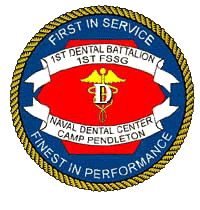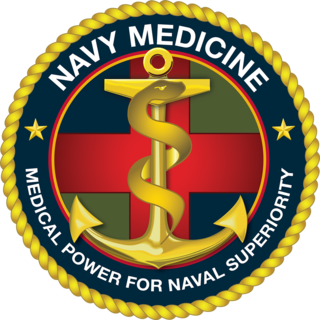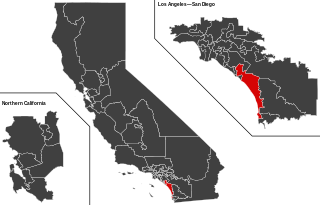
The Marine Corps Air Ground Combat Center (MCAGCC), also known as 29 Palms, is the largest United States Marine Corps base. The base covers a total area of 596,288 acres.

The Santa Margarita River which with the addition of what is now Temecula Creek, was formerly known as the Temecula River, is a short intermittent river on the Pacific coast of southern California in the United States, approximately 30.9 miles (49.7 km) long. One of the last free-flowing rivers in southern California, it drains an arid region at the southern end of the Santa Ana Mountains, in the Peninsular Ranges between Los Angeles and San Diego.

State Route 241 is a state highway in Orange County, California that is a toll road for its entire length. Its southern half from near Las Flores to near Irvine is the Foothill Transportation Corridor, while its northern half to SR 91 on the Anaheim–Yorba Linda border forms part of the Eastern Transportation Corridor system with SR 133 and SR 261.

The Las Flores Estancia was established in 1823 as an estancia ("station"). It was part of the Spanish missions, asistencias, and estancias system in Las Californias—Alta California. Las Flores Estancia was situated approximately halfway between Mission San Luis Rey de Francia and Mission San Juan Capistrano. It is located near Bell Canyon on the Camp Pendleton Marine Corps Base ten miles south of the City of San Clemente in northern San Diego County, California. The estancia is also home to the architecturally significant National Historic Landmark Las Flores Adobe, completed in 1868.

The I Marine Expeditionary Force is a Marine Air Ground Task Force (MAGTF) of the United States Marine Corps primarily composed of the 1st Marine Division, 3rd Marine Aircraft Wing, and 1st Marine Logistics Group. It is based at Marine Corps Base Camp Pendleton.

San Onofre State Beach is a 3,000-acre (1,214 ha) state park in San Diego County, California. The beach is 3 miles (5 km) south of San Clemente on Interstate 5 at Basilone Road. The state park is leased to the state of California by the United States Marine Corps. Governor Ronald Reagan established San Onofre State Beach in 1971. With over 2.5 million visitors per year, it is one of the five most-visited state parks in California, hosting swimmers, campers, kayakers, birders, fishermen, bicyclists, sunbathers, surfers, and the sacred Native American site of Panhe.
Rancho Mission Viejo is an active 23,000 acres (9,300 ha) ranch and farm, habitat reserve, residential community, and census-designated place in South Orange County, California. Rancho Mission Viejo originated as a series of land grants to John Forster in 1845. The remaining part of Rancho Mission Viejo consists of a nearly 17,000-acre (6,900 ha) nature reserve and multiple residential communities slated to open in phases between 2010 and 2030. As of the 2020 census, it had a population of 10,378.

The 1st Marine Logistics Group is a logistics unit of the United States Marine Corps and is headquartered at Marine Corps Base Camp Pendleton, California, with several subordinate elements also located at Marine Corps Air Station Yuma and Marine Corps Air Ground Combat Center Twentynine Palms.

2nd Battalion, 11th Marines (2/11) is an artillery battalion comprising four firing batteries and a Headquarters Battery. The battalion is stationed at Marine Corps Base Camp Pendleton, California. Its primary weapon system is the M777 lightweight howitzer. The battalion was the first in the Marine Corps to fully transition from the M198 Howitzer. They fall under the command of the 11th Marine Regiment and the 1st Marine Division.

The 7th Engineer Support Battalion is an engineering support unit of the United States Marine Corps and is headquartered at Marine Corps Base Camp Pendleton, California. The unit falls under the command of 1st Marine Logistics Group and the I Marine Expeditionary Force.

Rancho Santa Margarita y Las Flores was a 133,440-acre (540.0 km2) Mexican land grant in present-day northwestern San Diego County, California given by governor Juan Alvarado in 1841 to Andrés Pico and Pio Pico. The grant was located along the Pacific coast, and encompassed present-day San Onofre State Beach and Camp Pendleton. The site is now registered as California Historical Landmark #1026.

The 1st Dental Battalion is a Fleet Marine Force unit of the United States Navy. The battalion includes fifteen dental clinics spread throughout California and Arizona. The unit is based out of Marine Corps Base Camp Pendleton and falls under the command of the 1st Marine Logistics Group and the I Marine Expeditionary Force.

The United States Marine Corps is organized within the Department of the Navy, which is led by the Secretary of the Navy (SECNAV). The most senior Marine commissioned officer is the Commandant of the Marine Corps, responsible for organizing, recruiting, training, and equipping the Marine Corps so that it is ready for operation under the command of the unified combatant commanders. The Marine Corps is organized into four principal subdivisions: Headquarters Marine Corps, the Operating Forces, the Supporting Establishment, and the Marine Forces Reserve.

The Bureau of Medicine and Surgery (BUMED) is an agency of the United States Department of the Navy that manages health care activities for the United States Navy and the United States Marine Corps. BUMED operates hospitals and other healthcare facilities as well as laboratories for biomedical research, and trains and manages the Navy's many staff corps related to medicine. Its headquarters is located at the Defense Health Headquarters in Fairfax County, Virginia. BUMED has 41,930 medical personnel and more than a million eligible beneficiaries.

Combat Logistics Battalion 13 (CLB-13) is a logistics battalion of the United States Marine Corps. In garrison, it falls under the command of Combat Logistics Regiment 17 and the 1st Marine Logistics Group; however, when deployed, it forms the logistics combat element of the 13th Marine Expeditionary Unit. The battalion is based out of the Marine Corps Base Camp Pendleton, California.

California's 38th State Senatorial district is one of 40 California State Senate districts. It is currently represented by Democrat Catherine Blakespear of Encinitas.

San Mateo Creek is a stream in Southern California in the United States, whose watershed mostly straddles the border of Orange and San Diego Counties. It is about 22 miles (35 km) long, flowing in a generally southwesterly direction. Draining a broad valley bounded by the Santa Ana Mountains and Santa Margarita Mountains, San Mateo Creek is notable for being one of the last unchannelized streams in Southern California.
1st Landing Support Battalion(1st LSB) is a logistics battalion in the United States Marine Corps that supports distributed maritime operations and expeditionary advanced base operations. The unit is based out of Marine Corps Base Camp Pendleton, California and falls under the command of the 1st Marine Logistics Group and the I Marine Expeditionary Force.

Camp Las Pulgas also called 43 Area Camp Pendleton is subcamp of Camp Pendleton, California. The camp was built during World War 2. The camp was used for training US Marines before departing to the Pacific War. It also housed them after returning from the war. The camp had a mix of both tents and quonset huts. Las Pulgas is Spanish for The Fleas. The World War 2, Korean War and Vietnam War tent camp was called Camp Las Pulgas Bivouac Area and Tent Camp 1, this Area is now the parking lot for Camp Pendleton's Combat Convoy Simulator and the Training Support Division. In 1971 the camp became the home of the 11th Marine Regiment. The 11th Marine Regiment is the artillery division of the 1st Marine Division. The camp is also home to the 1st Maintenance Battalion. Also at Camp Las Pulgas - 43 Area is: Pulgas Lake, Las Pulgas Park, 11th Marine Armory, 43 Area Dental Clinic, Las Pulgas Barber Shop, 43 Area Fitness Center, 43 Area Pool, 43 Area Branch Medical Clinic, 43 Area SMP Single Marine Program Recreation Center, 43 Area Training Tank, United States Postal Office,

Naval Hospital Santa Margarita Ranch was a large US Navy hospital facility in Oceanside, California. Located on Camp Pendleton in Camp Pendleton South, California in San Diego County. Naval Hospital Santa Margarita Ranch was the first naval hospital in the area that opened in 1943 to support World War 2 wounded. Built on Rancho Santa Margarita y Las Flores, near the training Center's Lake O'Neill with 1,228 beds. In 1945 the hospital expanded to 1,584 beds. In 1950 the hospital was renamed Naval Hospital Camp Joseph H. Pendleton, Oceanside. The hospital was renamed a few times before being given its current name, Naval Hospital Camp Pendleton, in 1967. The 1943 hospital was built quickly, composed of 76 temporary, wood-frame buildings at first with 600 beds and opened on September 3, 1943. The hospital and support building were on 252 acres. Post war, in 1946 the hospital was reduced to 920 beds. In 1971 construction started on a new eight-story hospital, the new hospital opened in December 1974. The 1974 hospital was replaced with the current hospital in 2014. The site of the original Naval Hospital Santa Margarita Ranch is now: Lake O'Neill Campground, Camp Pendleton Youth Sports, O'Neill Fitness Center, Wounded Warrior Battalion West and the Camp Pendleton Fire Department Station 4.



























